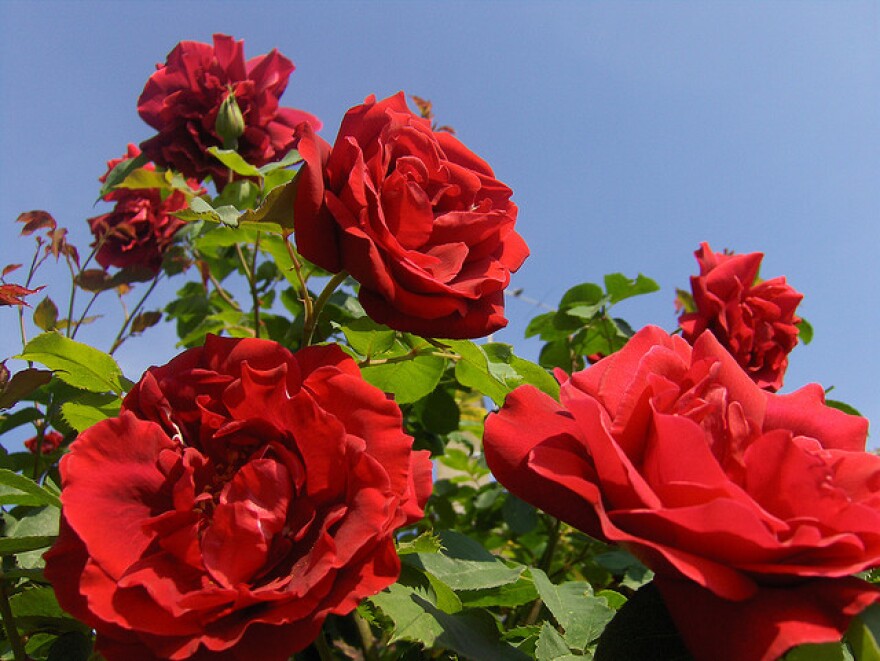Pssst... don't forget. Valentine's Day is Monday... four more shopping days (five if you count the actual day as a shopping day).
Judging by my colleagues here at the station, a couple of us are prepared, some are waiting for the weekend, and some will wait until that last minute.
Are you ready?
Flowers are often a big hit on Valentine's Day and some environmentally-conscious consumers have some questions.
Brian Palmer took a look at the environmental impact of flowers in his story on Slate.com.
His answers might surprise you.
First of all, if you're looking for locally grown flowers, you might have a hard time finding them:
In 1971, just 8 percent of the roses, carnations, and chrysanthemums sold in the U.S. were imported. (These three flowers account for the majority of cut-flower imports.) By 2003, that number had grown to 91 percent, with most of those flowers coming from Colombia and Ecuador.
Palmer says the globalization of the flower market is bad... and good.
The bad news - growers in South America rely "heavily" on pesticides and fertilizers - some that are illegal to use in the U.S. or Europe. Certification programs exist for cleaner growers, but Palmer says it can be difficult to find out how some flowers were grown.
The good news - the carbon footprint of imported flowers can be quite a bit less that flowers grown locally, even when those flowers were flown in from thousands of miles away. This is especially true in winter months.
Palmer cited a study from ecologists at the U.K.'s Cranfield University comparing roses imported to England from the Netherlands compared with roses imported from Kenya:
The Dutch blooms required energy to heat their greenhouses but made a much shorter flight, while the Kenyan roses had the benefit of natural warmth but a long journey. In the end, the Kenyan roses were responsible for 0.4 pounds of carbon dioxide per flower, compared with 6.4 pounds per Dutch-grown rose.
Palmer writes that "efficient growing conditions usually trump buyer-producer proximity."
Another option, you could forego the real flowers and buy silk flowers.
The jury is out on whether silk is better, but the jury is in on what that might do to your relationship.
Rolling out the same bouquet of silk flowers every year might lead to heartbreak or divorce - and as Juliet Eilperin in the Washington Post has pointed out, that can be bad for the environment.



